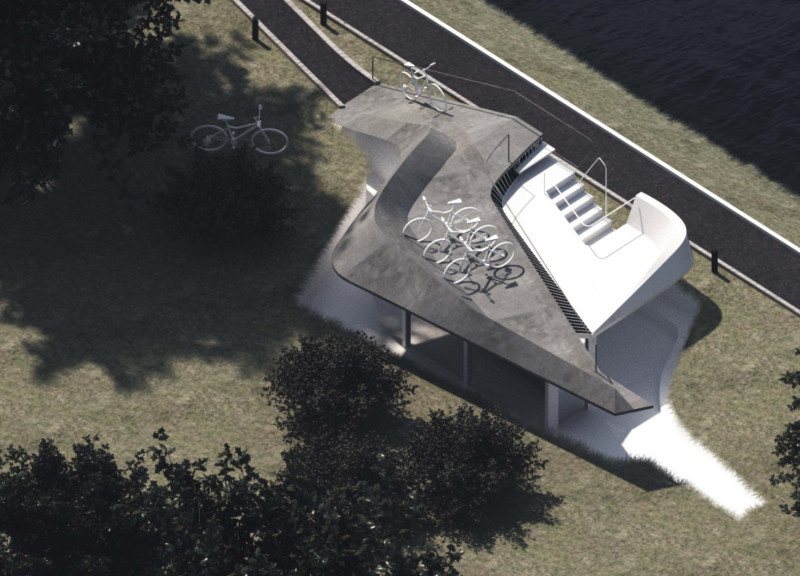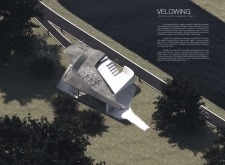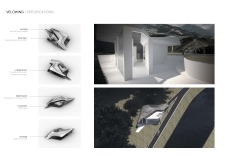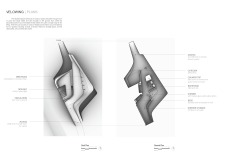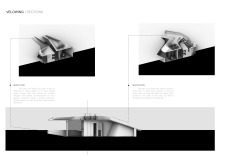5 key facts about this project
The structure features two distinct access pathways. One serves overnight guests, providing entry to interior lodging spaces, including areas for sleeping, storage, and dining, while the second pathway is dedicated to casual visitors. This unique arrangement not only addresses the diverse needs of users but also reduces traffic and interaction between different groups. The building’s elevated design maximizes the views of the natural landscape, creating a harmonious relationship between the structure and its environment.
Thoughtful attention to natural light is integral to Velowing's design. Skylights are strategically placed to enhance the interior ambiance, reducing reliance on artificial lighting and promoting energy efficiency. Large glass elements provide transparency, ensuring visual communication between the interior and exterior spaces and allowing for airflow and illumination. The roof functions as an accessible observation area, merging outdoor and indoor activities, reinforcing the project's commitment to engaging with the environment.
The use of durable materials underscores the project's architectural integrity. Concrete forms the main structural element, providing strength and longevity. Glass is incorporated to enhance natural light and connectivity, while metal features including railings contribute to a contemporary aesthetic. Wooden elements may also be employed within the interior to create a sense of warmth and comfort, enriching the user experience. These material choices reflect a balance between robustness and aesthetic appeal.
The multifaceted design of Velowing includes dedicated spaces for guest accommodations, with provisions for sleeping, restrooms, and a communal dining area featuring an outdoor fireplace. The inclusion of a well-defined public space for cycling maintenance further solidifies the project's focus on the cycling community. These functional components are arranged to support both relaxation and social interactions among users.
Velowing distinguishes itself by effectively merging practical usability with innovative design solutions. The segmentation of access routes for guests and visitors enhances safety and optimizes traffic flow. Additionally, the integration of sustainable practices aligns with a growing trend in architecture that seeks to minimize environmental impact while enhancing user experiences. The architectural design prioritizes landscape integration and promotes a positive interplay between built environments and natural settings.
To explore the architectural plans, sections, and design elements of Velowing in further detail, interested readers are encouraged to review the full project presentation. Insights into the architectural ideas and overall design strategies can provide a deeper understanding of its contribution to contemporary architecture.


